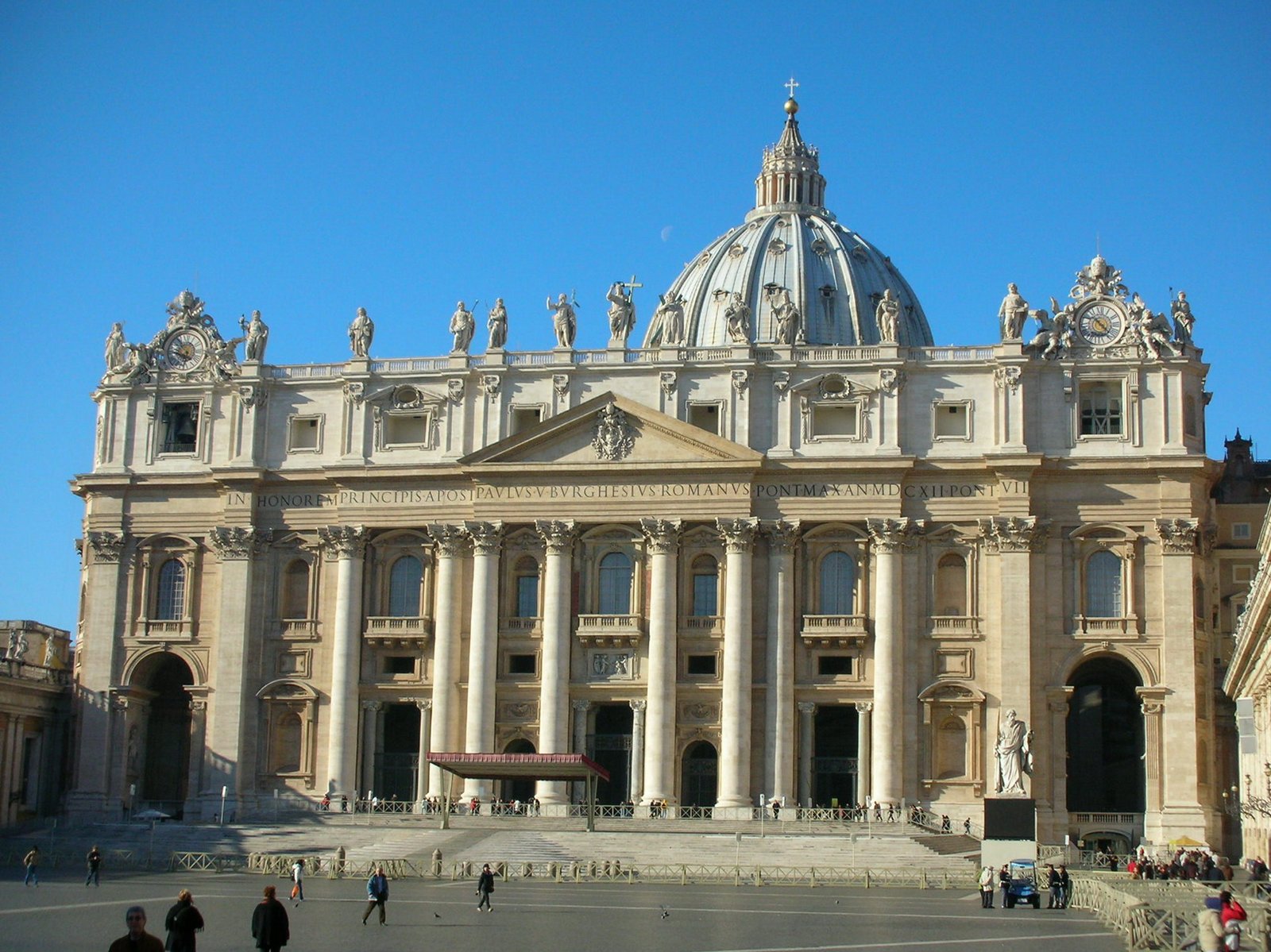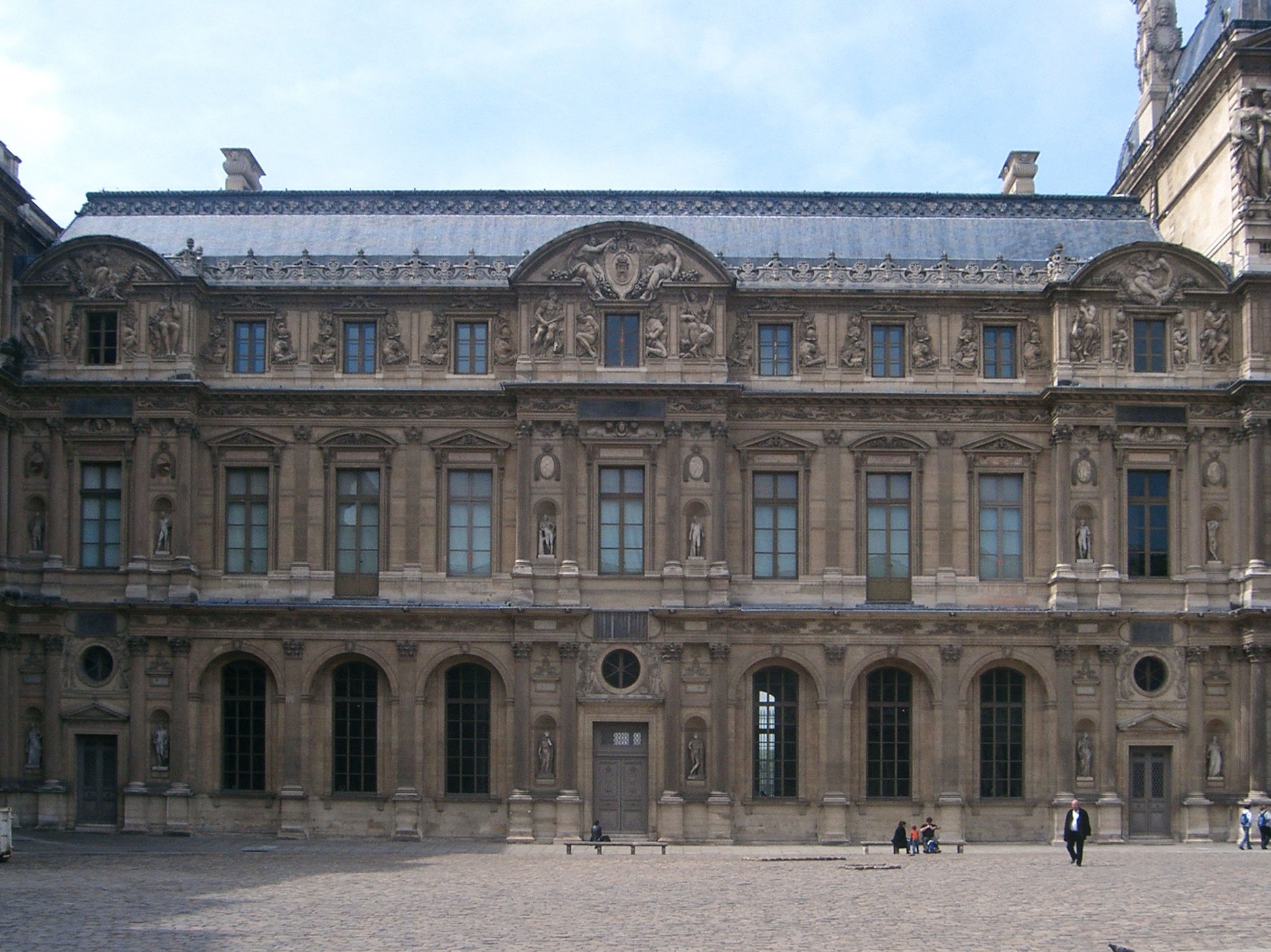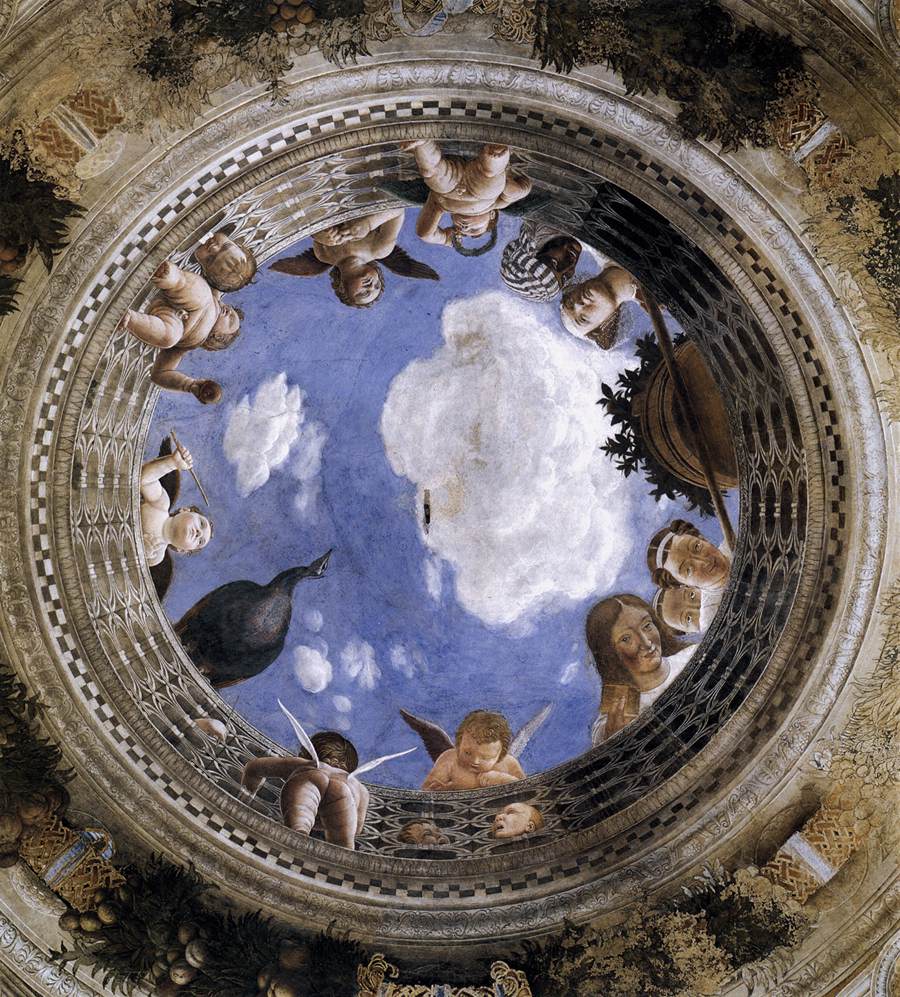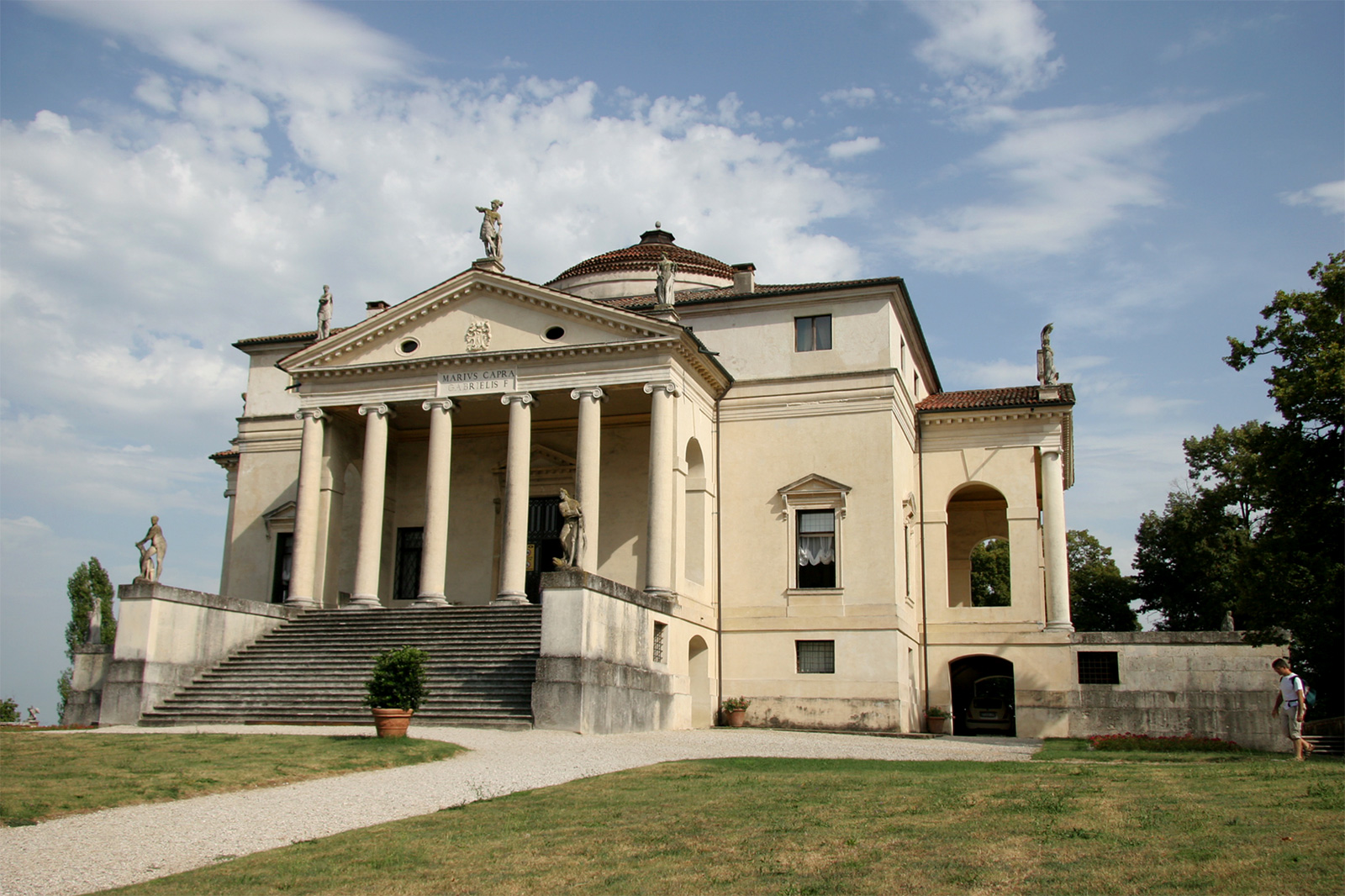
The Style Is Best Known For
- St. Peter’s in Rome (Italy)
- Sant’ Andrea in Mantua (Italy)
- Villa Capra (aka Villa Rotonda) in Vicenza (Italy)
- Chateau de Chambord (France)
- The Louvre – at least parts of it – in Paris (France)
What, When, and Where?
The Renaissance was born in Italy during the 15th century. Italian Renaissance architecture is typically seen in churches, houses (like massive palazzos or villas), and civic buildings. Aspects of the Renaissance spread throughout the rest of Europe through diplomatic – first to France, then eventually to the rest of Europe. However, many of the forms and ideas stayed within Italy.
How to Recognize It (Outside)
- Buildings are made of stone and usually look like classical temple.
- Facades are often repetitive, with a pattern or series of elements appearing again and again.
- There are usually many columns and pilasters (like columns, but square). They’re often built into the walls.
- Churches often have domed roofs and central plans rather than the long, cross-shaped plans of the Gothic basilica.
- Windows are small.
- Many arches appear; they’re always round, never pointed.
- Pediments and entablatures
- Ornamental details might include urns, foliage, shells, classical figures, and human or animal faces.

How to Recognize It (Inside)
- Fresco decoration (paintings applied directly to the wall).
- Sculpted decoration including foliage, shells, figures, faces.
- Coffers (recessed squares cut into a solid form like a dome or door).
- Decorative patterns made of differently-colored marble.

Background
The Renaissance was a time when Christian Europe came to again appreciate classical (ancient Greek and Roman) ideas. Intellectuals called humanists promoted the value of human ability and knowledge. The so-called “Renaissance man”, educated and skilled in many things, came out of this tradition. Literature, science, philosophy, and art all experienced huge gains. The heart of the movement was Italy, where people wanted to revive Rome’s glorious past. Powerful families competed with each other to commission bigger and more impressive structures. Popes, often from these same families, spared no expense to glorify the Catholic church. The artists and architects they hired for these projects are still household names today.
Underlying Ideas
- Classical forms and ideas can be adapted to fit Christian needs.
- Harmony and proportion create beauty.
- The circle is the most perfect of all geometric forms.
- Art and architecture has a strong intellectual component.
- Ideal architecture is logical and restrained, not emotional and dramatic like Gothic architecture.
- Building designs emphasize horizontality, not height (again, as opposed to Gothic).
- Linear perspective (creating the illusion of three dimensions in a two-dimensional medium) came about in the Renaissance. Ideas about perspective influenced architecture although it’s already a three-dimensional medium.
Key Architects
- Filippo Brunelleschi
- Lorenzo Ghiberti
- Michelangelo
- Leon Battista Alberti
- Donato Bramante
- Giulio Romano
- Andrea Palladio

Don’t Confuse It With
Later styles also influenced by classicism: From the Renaissance through the early-20th century, classically-inspired architecture never really went out of style. It had different names in different centuries, but the ideas were always similar. Some of the main styles are listed below. Look for guides to be posted shortly.
- Baroque (early 17th to mid-18th centuries throughout Europe): Baroque art and architecture took aspects of the Renaissance and played around with them. The effects were quite dramatic. The facades of Baroque buildings often curve dramatically, shapes may be distorted, and an insane amount of gilding can be included. You can think of Baroque as Renaissance meets Surrealism. The boundaries between Renaissance, Baroque, and Mannerism (the precursor to Baroque) are not always clear.
- Neo-Classicism (18th century throughout Europe and the U.S.): After Baroque, Neo-Classicism returned more closely to classical roots. Buildings become a little more subdued and often more human in scale. Neo-Classicists appreciated ancient Greek art and culture as much as Roman, while Renaissance architects were mostly interested in Roman. The young United States adopted classical Greek forms for its important buildings because of the ideological link with democracy.
- Beaux Arts (mid-19th through early-20th centuries in France and the U.S.): Beaux-Arts (French for “fine arts”) was a mid-19th century to early 20th century style blending aspects of classical, Renaissance, and Baroque. Beaux-Arts buildings are often great mansions or buildings like railway stations and libraries. Beaux Arts was popular during the 19th century, especially in the American Gilded Age.
Resources
- Adams, Laurie Schneider. Art Across Time. P. 480-487, 504-507, 542-546.
- Cragoe, Carol Davidson. How to Read Buildings, a crash course in architectural styles. New York: Rizzoli, 2008.
- Davies, Penelope et al. Janson’s History of Art, The Western Tradition. Upper Saddle River, NJ: Pearson Education, 2007 (7th ed.). P. 503-564.
- Department of European Paintings. “Architecture in Renaissance Italy.” In Heilbrunn Timeline of Art History. New York: The Metropolitan Museum of Art, 2000–. (October 2002).
- McNamara, Denis R. How to Read Churches: A crash course in ecclesiastical architecture. New York: Rizzoli, 2011.
- Watkins, David. A History of Western Architecture. London: Laurence King Publishing, 2011. 5th edition.

